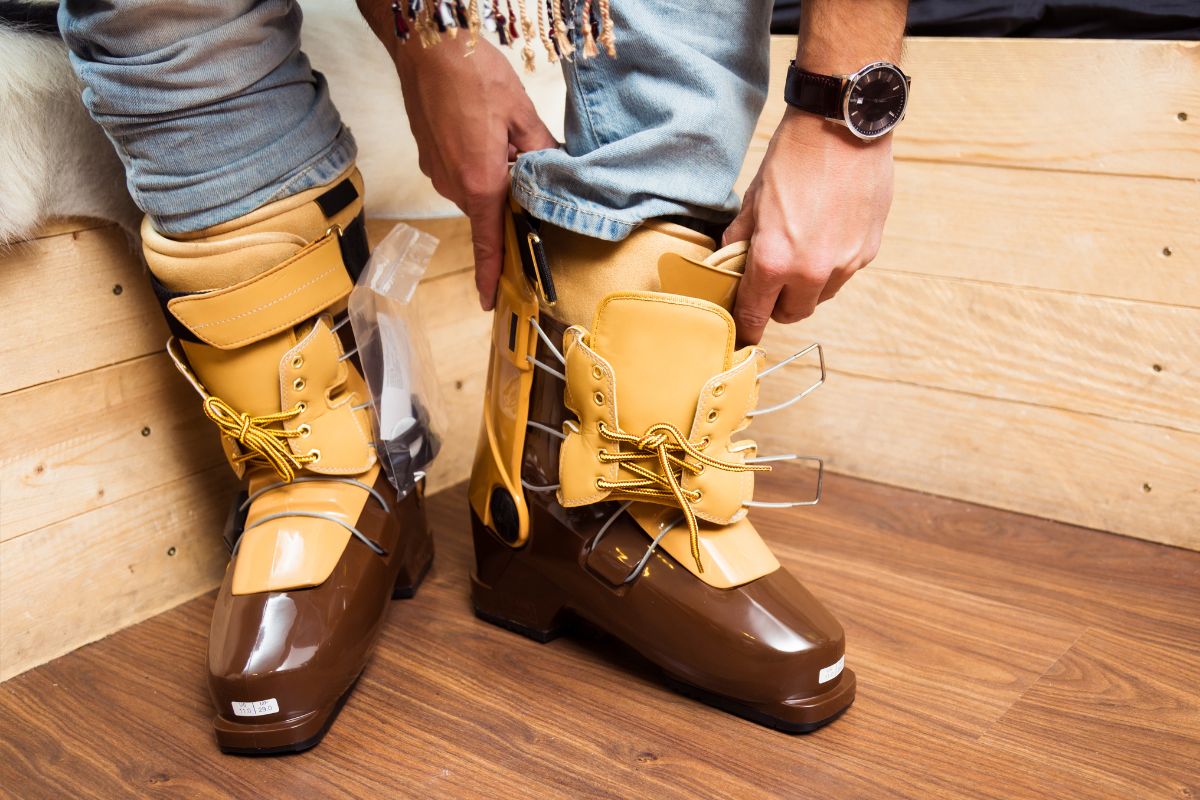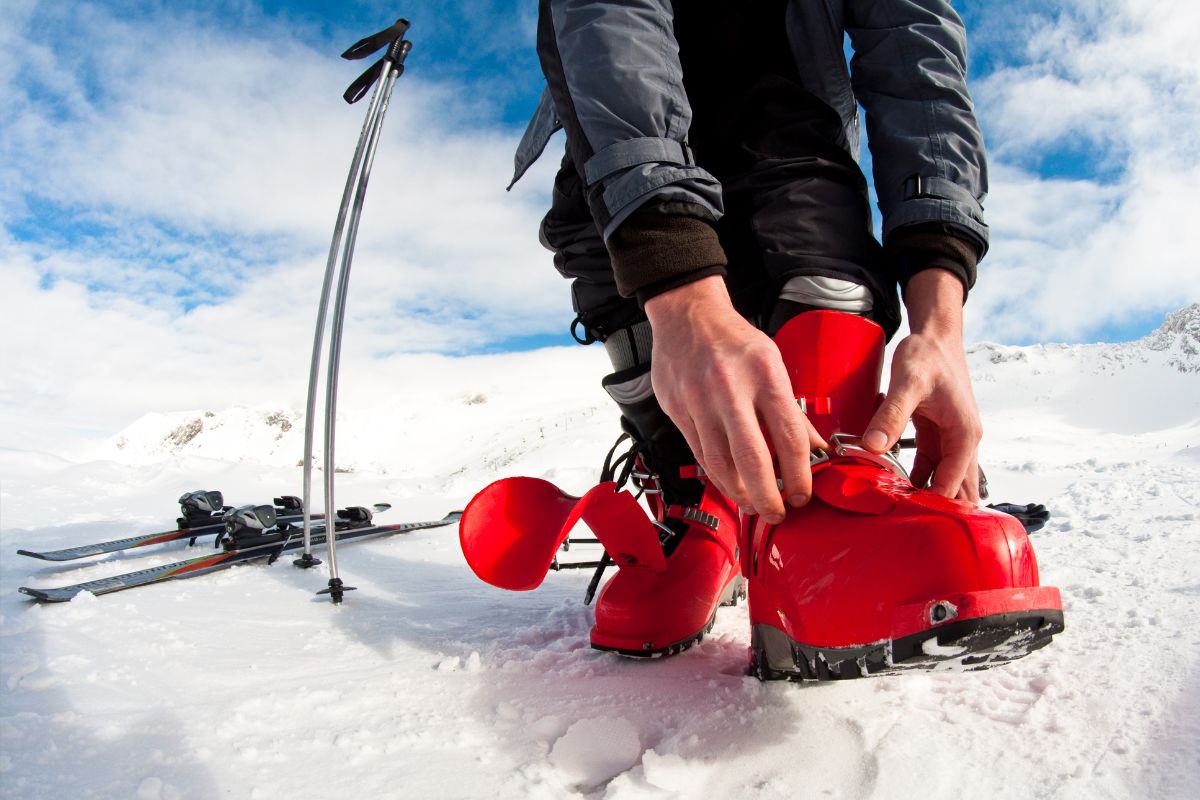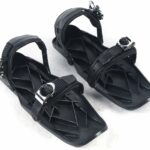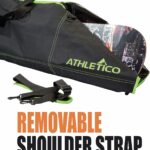Putting on boots for skiing, seems like a simple task, doesn’t it? Well, if you want to have that optimum level of control and comfort when you are spending hours on the slopes, then you’ll want to get it right.
Thankfully, there are some general rules of thumb that will help you put your boots on properly.

This will make putting on your boots very easy, ensuring that you have plenty of wriggle room in the feet and that you don’t cut off any circulation.
So how can you put a ski boot on safely? How can you ensure that you will be comfortable for the duration of your skiing? How does a ski boot determine your control on the slopes (see also “How Tight Should Ski Boots Be?“)?
Well, keep reading this article to find out the do’s and don’ts of putting on a ski boot.
What Are Ski Boots?
These are the footwear that you have for skiing. They are usually made from hard carbon and plastic materials which is what makes them so resilient to the hard pounding of the snow over many months and years.
These boots are designed to let the owner clip into their skis and keep their foot attached to the ski itself. This ensures proper security and that your skis will not fly off when you are on the slopes.
There are a few different types of skis, some of which are traditional, whereas others have evolved along with new innovations in skiing. Here is a brief list of the different types of skis:
- Front-entry ski boot – these are very conventional-style ski boots, which come in two pieces that are attached by a pivot. This comes with a thick cuff that is very durable but also makes it more complicated to take off.
- Rear-entry ski boot – This is a boot that is split in the cuff, which the sole and the foot housing coming as one piece. This boot is generally designed to be easier to put on and take off.
- Three-piece ski boot – this is very similar to the front-entry design, coming with separate foot and leg sections that are joined ta the ankle. This comes with an open cuff that makes these great for taking on and off.
- Side-entry ski boot – this is a less common type of ski boot that opens at the side so that you can slot your foot in. Again, this is designed to make it much easier to discharge the boot in case of emergencies.
When we go more in-depth about how to take off and put on your ski boot, you’ll have to factor in the type of boot that you have and adapt accordingly.
How To Put On A Ski Boot

There are a few simple steps that you can take to get your ski boot on properly:
- Buckles out – make sure all the clasps on your ski boot are undone, this will make it much easier to get your foot in unobstructed.
- Pull the tongue to the side – you’ll need to make sure that your tongue is yanked to the side so you can get your foot in comfortably.
- Buckle up in order – once your first is firmly and comfortable within the housing of the boot, then buckle up, starting from the very top of the boot and working your way down.
- Keep flexing – as you do up the boot, keep flexing your heel and foot so that you have the maximum amount of room to move inside.
- Velcro – adjust the Velcro strap so that the boot is very secure and comfortable. Make sure that you can still move your foot around a little inside.
- Cover your boot – make sure that once your boot is firmly secure that you pull the elastic bottoms of your trousers over the boot. This will stop any snow from getting into your boot.
If you follow these steps to putting on your boot properly, then you’ll have everything that you need to maintain control when you’re on the slopes.
If you experience any rubbing on your foot within the first few minutes of putting on your ski boot, then you should take it off and repeat the process above.
What Injuries Can Result From Not Putting On Your Ski Boot Properly?
If your ski boot is not secure to your foot, then it might snag or cause you to lose control when you are going down a treacherous slope.
This could also result in a twisted ankle, which will not only be very painful but could also cause you to fall, which could result in further injuries like a fractured wrist or even a head injury.
You could also twist your knee as you overcompensate to steady an improperly fitted boot. Knee injuries are the most common for skiers, so you should be careful that all of your leg is supported in the proper manner.
Frequently Asked Questions
Can My Boot Protect Me From Falls?
No, but it can help you to gain more control over your skis. If you are negotiating tight corners, then a ski boot will surely help you to achieve this with as little injury as possible.
What should ski boots be made from?
Most ski boots are made from PU plastic. These materials can help to dampen any vibrations which can often travel up the leg and cause you some serious shocks.
It will also help to stop violent shocks and is a lot more flexible than heavy materials like metal.
How can I stop my ski boots from breaking?
You should try and take them on less challenging slopes. The more you twist and bend your ski boots, the higher the risk of the plastic warping and the buckles breaking.
Conclusion
We hope that our guide to putting on ski boots has helped you gain a more comfortable footing when you are on the slopes.
You should make sure that your foot is well-protected in skiing, as you won’t want to suffer any painful injuries such as sprains or breaks.
- How to Choose a Skim Board - September 10, 2023
- is Skim Boarding Hard? - February 8, 2023
- How To Wax a skim board - February 8, 2023










